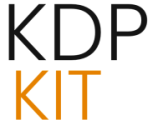
Innovations in the Kindle Scribe Ecosystem and Note Taking: Productivity Meets Paper
The Kindle Scribe line has been positioned as the premium gateway between traditional reading and active digital work, and the 2025 updates solidify this role by making the note-taking interface more flexible and integrated. The focus here has been on improving the physical writing sensation while simultaneously leveraging AI to make the resulting notes more useful and interconnected within the broader digital ecosystem. The goal seems to be to eliminate the “walled garden” feeling that sometimes plagues dedicated e-note devices.
The Evolution of Active Canvas for Dynamic Annotation
The original concept of Active Canvas, which allowed notes to dynamically integrate with the reflowing text on the page, has received a crucial upgrade with the introduction of expandable margins. Readers can now take notes directly in the margin area, expanding that space for longer-form thoughts or detailed commentary without obscuring the primary text. Conversely, these extended notes can be collapsed back into a minimal footprint, preserving the visual integrity of the page layout.
This level of granular control over the annotation space respects both the reader who annotates lightly and the academic or deep reader who requires extensive margin space for critical engagement. It’s a nuanced approach to digital annotation best practices.
Enhanced Digital Organization and External Cloud Integration
To support the enhanced creation capabilities of the new Scribe models, the software environment has been significantly bolstered on the organizational front. The introduction of “Workspaces” provides a powerful, folder-like structure, allowing users to group related materials—PDFs, books, and associated handwritten notes—into cohesive project or study areas. This moves the Scribe closer to a true document management system.
Furthermore, the integration of popular cloud storage services, such as Google Drive and OneDrive, allows for seamless import and export of documents and notes. This interoperability is essential, transforming the Scribe from a somewhat closed system into a truly flexible component of a modern, multi-device productivity suite. Sharing notes directly to OneNote is also now a standard capability.
The Unveiling of the Next Generation Kindle Hardware: Color and Speed Arrive
The software evolution has been paralleled by a substantial hardware refresh across the Kindle family in 2025, marking what some analysts are calling the most significant generational leap in over a decade. While the standard Kindle models received performance boosts, the Scribe line received the most dramatic visual and functional overhaul, signaling a clear focus on the premium, utility-driven segment of the market.. Find out more about AI generated spoiler-free story so far feature guide.
The Landmark Introduction of Color E-Ink Displays
The most visually striking advancement is the debut of the first-ever color Kindle displays, spearheaded by the new Colorsoft series. This addresses the long-standing limitation of monochrome E Ink technology, making the platform finally viable for visual media such as graphic novels, textbooks rich in diagrams, and any content where color-coding is essential for comprehension.
This breakthrough is achieved through a custom Oxide-based display technology that utilizes a color filter and light guide. While these initial color panels operate at a lower pixel density—rendering color images at 150 PPI, compared to 300 PPI for standard black-and-white text displays—their introduction fundamentally broadens the type of content that can be comfortably consumed on an E Ink screen. This pushes the technology into markets previously dominated by standard tablets, all while retaining the beloved paper-like feel.
Performance Gains and Refinements in the Scribe Lineup. Find out more about Ask This Book contextual query resolution tips.
Beyond color, the entire Scribe lineup—which now includes an entry-level model (no front light), a mid-tier, front-lit version, and the flagship Colorsoft—boasts marked improvements in speed and physical design. Reports confirm that the devices feature up to forty percent faster overall performance, meaning page turns, navigation through large libraries, and the execution of AI commands are significantly snappier. This is powered by a new quad-core chip and increased memory.
The physical design has also matured, moving toward a more symmetrical bezel design that improves ergonomics and handling consistency. Perhaps most notable for note-takers is the writing experience itself. The devices feature new texture-molded glass surfaces designed to provide greater friction, mimicking the feel of writing on actual paper far more closely than previous generations. This, combined with a rearchitected display stack to shrink parallax to near zero, firmly cements the device’s appeal to tactile-focused users.
Economic and Market Implications of These Digital Expansions
The strategic decisions reflected in the 2025 Kindle updates have immediate and far-reaching consequences for the competitive dynamics within the broader digital reading and portable computing markets. By heavily investing in AI features and introducing differentiated hardware, Amazon is solidifying its ecosystem moat against competitors still focused primarily on general-purpose tablet functionality or less sophisticated e-readers. This is a clear play for market segmentation and retention.
Competitive Positioning Against Traditional Tablet Computing. Find out more about AI powered summarization of Kindle Scribe notes strategies.
These advancements serve as a direct challenge to multi-purpose tablets in the reading and note-taking space. By concentrating computational power specifically on reading comprehension aids like “Story So Far” and offering a superior, glare-free writing surface on the Scribe, Amazon is arguing for the specialized value of a dedicated E Ink device. The pitch is clear: for deep reading and focused note-taking, the Kindle ecosystem now offers intelligence and utility that general-purpose devices struggle to match due to display differences and software fragmentation. This strategy targets the specific pain points of students, academics, and dedicated readers who prioritize eye comfort and focused interaction over vibrant video playback.
Reshaping the E-Book Monetization Landscape
For the publishing industry, Kindle Translate represents a potent new avenue for maximizing return on content investment. By effectively neutralizing the primary cost barrier for global expansion, the service incentivizes authors to view their work as inherently international from the moment of creation. This can lead to a greater volume of published material, increased royalties flowing to authors, and potentially a stabilization or even reduction in the average price point for translated editions as volume scales. The ability for translated works to be enrolled in profitability programs like Kindle Unlimited royalty changes further integrates them into the core monetization structure, ensuring they are promoted to a large, engaged segment of the customer base.
Future Trajectories and Anticipated Developments in E-Content Consumption
The current wave of innovation provides a strong indicator of where the intersection of artificial intelligence and digital reading is headed. The developments of 2025 are likely just the initial phase of a much deeper integration, suggesting a future where the e-reader becomes an even more personalized learning and literary companion. The trajectory points toward a device that not only stores content but actively aids in its assimilation and external application.. Find out more about Kindle Translate quality assurance checkpoints overview.
The Convergence of Reading AI and Voice Assistants
A significant planned evolution involves the deeper integration of the Scribe’s AI capabilities with broader smart home assistants, such as Alexa. The prospect of sending synthesized notes or summaries directly to an assistant to initiate a spoken conversation about the content represents the next frontier. Imagine verbally querying your device about a character’s past decisions in a novel while making breakfast, based on notes you took days ago—this closed-loop system of digital inscription, AI analysis, and spoken retrieval promises ultimate convenience and a new paradigm for information recall.
Anticipated Expansion in Content Types and Interactive Narratives
If AI can effectively translate and summarize prose, the logical next step involves applying similar technology to more complex, visually dense, or even interactive content formats. While the Colorsoft display opens the door for graphic novels and richly illustrated textbooks, future developments might include AI assistance for interactive learning materials, where the system helps explain complex diagrams on the fly. Even more speculative, but logically consistent, is the extension of the “Story So Far” principles into early forms of adaptive narratives where the reading experience subtly shifts based on the reader’s demonstrated comprehension level.. Find out more about AI generated spoiler-free story so far feature definition guide.
The ultimate goal appears to be creating a reading platform that is dynamically responsive not just to user input, but to user understanding—a personalized literary tutor hiding inside an E Ink screen.
Key Takeaways and Actionable Insights for Readers and Creators
This isn’t just about new gadgets; it’s about new capabilities. For anyone invested in the literary digital world, here are the critical takeaways as of mid-November 2025:
- For Authors: Kindle Translate offers an unprecedented, free-to-beta opportunity to go global instantly. The trade-off is the mandatory AI label and the need for human oversight if you aim for top-tier fidelity. Prioritize reviewing translations for idioms and cultural nuance—the hybrid approach remains the gold standard for serious authors.
- For Readers of Complex Works: The “Story So Far” and “Ask This Book” features, while rolling out to hardware in early 2026, are already changing how long-form series are consumed via apps. If you struggle to remember details between reading sessions, these tools are worth sticking with the ecosystem for.. Find out more about Ask This Book contextual query resolution insights information.
- For Note-Takers and Students: The new Scribe lineup, especially the Colorsoft, prioritizes function over raw flash. Faster performance, better screen friction, and robust cloud integration with services like Google Drive make the Scribe a far more serious productivity machine than its predecessor. Organize your study materials into mastering Scribe Workspaces now.
- On Color E-Ink: The arrival of color is a major step for visual content, but temper expectations. It’s excellent for charts, covers, and simple graphics, but it does sacrifice the ultra-crisp black-and-white fidelity (150 PPI vs. 300 PPI) for those specific visuals. Know what content type suits which device.
The advancements in 2025 confirm a clear directive from Amazon: the future of reading is not just about presenting text; it’s about contextual assistance, global reach, and tangible productivity. The machine is not replacing the writer or the reader, but it is becoming an indispensable collaborator. The fidelity checkpoints in translation and the spoiler-guardrails in comprehension features show a mature, albeit cautious, deployment of generative AI.
What feature are you most excited to try out—the global reach of Kindle Translate global strategy or the personal catch-up memory of “Story So Far”? Let us know in the comments below what you think the next big AI leap in e-reading will be!







